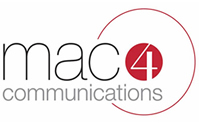As I slathered sunscreen on my boys before school today, I couldn’t help but think that it still feels like summer. But don’t let those warm temps deceive you – fall is here and the holidays are just around the corner. As an adult, the “most wonderful time of the year” can also be the most stressful time of the year. Between the pressure to give #instagramable gifts and gatherings and the insane schedule of events and activities, it’s no surprise that employees are more distracted and less productive during the weeks between Thanksgiving and New Year’s Day.
But that doesn’t mean that you have to lower your employee expectations for two months. By planning ahead, you can identify a few “holiday-only policies” that work for your business and communicate to them clearly so everyone has a more enjoyable – and productive – holiday season. Here are a few tips on how to do just that:
1.Use management communications to set goals and deadlines early.
Share your goals and expectations for holiday productivity with managers in late October to give them a chance to connect with their team members to assess current projects and set realistic timelines for completion. When employees set their own deadlines and understand productivity expectations, they are less likely to let projects slide with excuses of holiday visitors, school pageants or team members who are out of the office. Setting up weekly or bi-weekly check-ins can also ensure that employees are on track to meet their defined goals and deadlines.
2. Relax the rules.
We’re not talking about serving hot toddies in the cafeteria or turning the boardroom into a gift wrapping station. But a few special “holiday-only rules” will help employees to feel appreciated, happier and ultimately, more productive. Decide what rules or privileges make sense for your corporate culture and work environment. Maybe it’s a surprise day of PTO to be used on any December day. Or an afternoon hour once a week when online shopping is allowed.
3.Let employees know exactly what to expect – and what’s expected of them.
Once the holiday policies have been finalized, HR and Communications should work together to develop a communications plan. Send an initial email, portal message, and/or other communication in early November outlining the project planning, announcing the “holiday-only rules” and reinforcing the company’s mission statement. Starting the week of Thanksgiving, a simple weekly communication can let employees know what activities they can look forward to and serve as a reminder of productivity expectations and goals.
Tip: Read more on how to plan your communications here.
The holidays will certainly affect your workplace, but with the right preparation and communications, you can minimize the impact on productivity. Regardless of which policies, incentives and communications you decide to use, tracking this year’s productivity and performance can help you assess what worked best and decide how to approach the holidays next year.
Author: Estera Hayes

